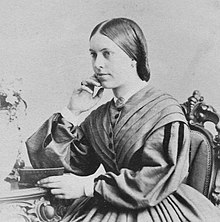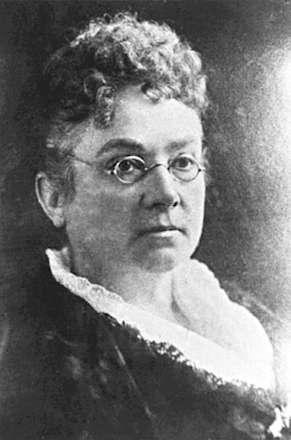
Emily Howard Stowe was a Canadian physician who was the first female physician to practise in Canada, the second licensed female physician in Canada and an activist for women's rights and suffrage. Stowe helped found the women's suffrage movement in Canada and campaigned for the country's first medical college for women.

Women's suffrage, or the right of women to vote, was established in the United States over the course of the late 19th and early 20th centuries, first in various states and localities, then nationally in 1920 with the ratification of the 19th Amendment to the United States Constitution.
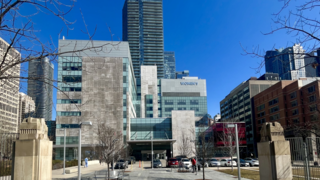
Women's College Hospital is a teaching hospital in Toronto, Ontario, Canada. It is located in downtown Toronto at the north end of Hospital Row, a section of University Avenue where several major hospitals are located. It currently functions as an independent ambulatory care hospital.
The abortion trial of Emily Stowe was a famous early Canadian judicial decision on abortion in Canada. The case involved Dr. Emily Stowe, one of Canada's first female doctors. Stowe was acquitted, which was a rare outcome for abortion trials in the nineteenth century.

Women's suffrage was an important political issue in the late-nineteenth-century New Zealand. In early colonial New Zealand, as in European societies, women were excluded from any involvement in politics. Public opinion began to change in the latter half of the nineteenth century and after years of effort by women's suffrage campaigners, led by Kate Sheppard, New Zealand became the first nation in the world in which all women had the right to vote in parliamentary elections.
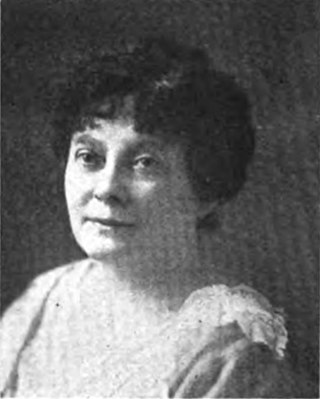
Ann Augusta Stowe-Gullen, was a Canadian medical doctor, lecturer and suffragist. She was born in Mount Pleasant, Ontario as the daughter of Emily Howard Stowe and John Fiuscia Michael Heward Stowe. A plaque regarding her work can be found in Brant County, Ontario.
The history of feminism in Canada has been a gradual struggle aimed at establishing equal rights. The history of Canadian feminism, like modern Western feminism in other countries, has been divided by scholars into four "waves", each describing a period of intense activism and social change. The use of "waves" has been critiqued for its failure to include feminist activism of Aboriginal and Québécois women who organized for changes in their own communities as well as for larger social change.
The National Council of Women of Canada is a Canadian advocacy organization based in Ottawa, Ontario, aimed at improving conditions for women, families, and communities. A federation of nationally-organized societies of men and women and local and provincial councils of women, it is the Canadian member of the International Council of Women (ICW). The Council has concerned itself in areas including women's suffrage, immigration, health care, education, mass media, the environment, and many others. Formed on October 27, 1893, in Toronto, Ontario, it is one of the oldest advocacy organizations in the country. Lady Aberdeen was elected the first president of the National Council of Women of Canada in 1893. Prominent Council leaders included Lady Gzowski, Dr. Augusta Stowe-Gullen, and Adelaide Hoodless.

The Kensington Society (1865–1868) was a British women's discussion society in Kensington, London, which became a group where rising suffragists met to discuss women's rights and organised the first campaigns for female suffrage, higher education and property holding.

Women's suffrage in Australia was one of the early achievements of Australian democracy. Following the progressive establishment of male suffrage in the Australian colonies from the 1840s to the 1890s, an organised push for women's enfranchisement gathered momentum from the 1880s, and began to be legislated from the 1890s. South Australian women achieved the right to vote and to stand for office in 1895, following the world first Constitutional Amendment Act 1894 which gained royal assent the following year. This preceded even universal male suffrage in Tasmania. Western Australia granted women the right to vote from 1899, although with racial restrictions. In 1902, the newly established Australian Parliament passed the Commonwealth Franchise Act 1902, which gave women equal voting rights to men and the right to stand for federal parliament. By 1908, the remaining Australian states had legislated for women's suffrage for state elections. Grace Benny was elected as the first female local government councillor in 1919, Edith Cowan the first state Parliamentarian in 1921, Dorothy Tangney the first Senator and Enid Lyons the first Member of the House of Representatives in 1943.
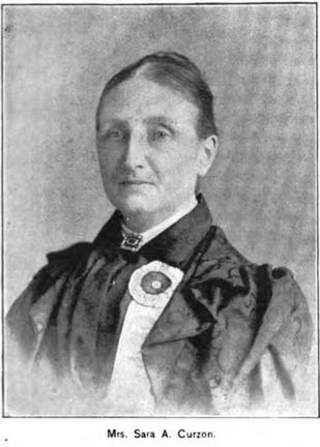
Sarah Anne Curzon née Vincent was a British-born Canadian poet, journalist, editor, and playwright who was one of "the first women's rights activists and supporters of liberal feminism" in Canada. During her lifetime, she was best known for her closet drama, Laura Secord: The Heroine of 1812, "one of the works that made Laura Secord a household name."

Women's suffrage in Canada occurred at different times in different jurisdictions to different demographics of women. Women's right to vote began in the three prairie provinces. In 1916, suffrage was earned by women in Manitoba, Saskatchewan, and Alberta. The federal government granted limited war-time suffrage to some women in 1917 and followed with full suffrage in 1918, at least, granting it on same basis as men, that is, certain races and status were excluded from voting in federal elections prior to 1960.

The Local Council of Women of Halifax (LCWH) is an organization in Halifax, Nova Scotia devoted to improving the lives of women and children. One of the most significant achievements of the LCWH was its 24-year struggle for women's right to vote (1894-1918). The core of the well trained and progressive leadership was five women: Anna Leonowens, Edith Archibald, Eliza Ritchie, Agnes Dennis and May Sexton. Halifax business man George Henry Wright left his home in his will to the LCWH, which the organization received after he died in the Titanic (1912). Educator Alexander McKay also was a significant supporter of the Council.
The Dominion Women's Enfranchisement Association (DWEA) was an organization founded by Dr. Emily Howard Stowe in 1889 to fight for the right of women to vote. She was succeeded by her daughter Dr. Augusta Stowe-Gullen as President of the Dominion Women's Enfranchisement Association in 1903. Later the association was renamed the Canadian Suffrage Association in 1906.
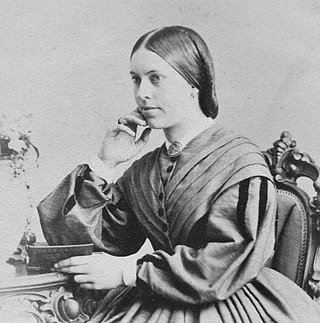
Jessie Turnbull, also known as Jessie McEwen, was a Canadian women's rights activist.
The Women's suffrage movement in India fought for Indian women's right to political enfranchisement in Colonial India under British rule. Beyond suffrage, the movement was fighting for women's right to stand for and hold office during the colonial era. In 1918, when Britain granted limited suffrage to women property holders, the law did not apply to British citizens in other parts of the Empire. Despite petitions presented by women and men to the British commissions sent to evaluate Indian voting regulations, women's demands were ignored in the Montagu–Chelmsford Reforms. In 1919, impassioned pleas and reports indicating support for women to have the vote were presented by suffragists to the India Office and before the Joint Select Committee of the House of Lords and Commons, who were meeting to finalize the electoral regulation reforms of the Southborough Franchise Committee. Though they were not granted voting rights, nor the right to stand in elections, the Government of India Act 1919 allowed Provincial Councils to determine if women could vote, provided they met stringent property, income, or educational levels.

Emily Julian McManus was a Canadian poet, writer, and educator. In addition to a number of poems, some of which were reproduced in the collection of George William Ross, and some by William Douw Lighthall in Songs of the Great Dominion, she was the author of "Froney", of "A Romance of Carleton", of "The Thirteenth Temptation", and of the Old, Old Story, the latter a novel.
